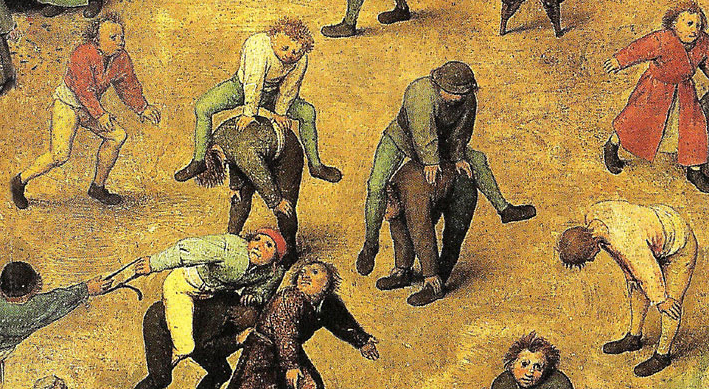|
Leapster2
The Leapster Learning Game System is an educational handheld game console aimed at 5 to 10-11 year olds (preschool to fourth grade), made by LeapFrog Enterprises. Its games teach the alphabet, phonics, basic math (addition, subtraction, multiplication, division), and art and animal facts to players. Along with a directional pad, the system features a touchscreen with a stylus pen that enables young users to interact directly with the screen. LeapFrog released the Leapster2 handheld device as a successor to the Leapster in July 2008. The Leapster2 is essentially the previous system with an added USB port and SD card slot. These additions give the ability to play a downloaded full game or short game including the ability to log data on gameplay, such as what has been learned by the user or art created by the user. Downloadable games are not for sale. In June 2010, the Leapster Explorer was released, thus ending the original Leapster line. The games released since the Leapster2' ... [...More Info...] [...Related Items...] OR: [Wikipedia] [Google] [Baidu] |
LeapFrog Enterprises
LeapFrog Enterprises, Inc. (commonly known as LeapFrog) is an educational entertainment and electronics company based in Emeryville, California. LeapFrog designs, develops, and markets technology-based learning products and related content for the education of children from infancy through grade school. The company was founded by Michael Wood and Robert Lally in 1994. John Barbour is the chief executive officer of LeapFrog. History Founding: 1990–1997 The history of LeapFrog traces back to the late 1980s when LeapFrog co-founder Michael Wood, an attorney at Cooley LLP, had difficulties teaching his son how to read. He began researching phonics and marketing while continuing as a partner at Cooley. By 1994, Wood had developed the first prototype of what would become Phonics Desk, LeapFrog's first product. The prototype utilized a Texas Instruments Integrated circuit, chip that was previously used by one of Wood's clients to develop talking greeting cards. Wood solicited fe ... [...More Info...] [...Related Items...] OR: [Wikipedia] [Google] [Baidu] |
Leapster Explorer
The Leapster Explorer is a handheld console developed and marketed by LeapFrog Enterprises as the third generation of the successful Leapster series. It is aimed at children aged 4 to 9. In June 2012, new versions of the Leapster Explorers were announced, set to be released on July 18 of that same year. The update was branded the LeapsterGS Explorer and it has higher resolution front and back cameras, longer battery life, 2GB of memory, and an LF 2000 processor. Hardware The Leapster Explorer is a Linux device powered by an ARM9-based processor clocked at 393 MHz with 64 MB DDR SDRAM, 512 MB user storage, and a Giantplus touchscreen display. For the LeapsterGS Explorer, it is powered by a LF 2000 processor clocked at 550 MHz with 128 MB DDR SDRAM, 2GB memory storage, a new thinner sleek design, larger screen, and a bult-in megapixel camera as well as a motion sensor. Like the Didj and unlike the Leapster/Leapster2, the consoles have also been a subject t ... [...More Info...] [...Related Items...] OR: [Wikipedia] [Google] [Baidu] |
Seventh Generation Of Video Game Consoles
The seventh generation of home video game consoles began on November 22, 2005, with the release of Microsoft's Xbox 360 home console. This was followed by the release of Sony Computer Entertainment's PlayStation 3 on November 17, 2006, and Nintendo's Wii on November 19, 2006. Each new console introduced new technologies. The Xbox 360 offered games rendered natively at high-definition video (HD) resolutions, the PlayStation 3 offered HD movie playback via a built-in 3D Blu-ray Disc player, and the Wii focused on integrating controllers with movement sensors as well as joysticks. Some Wii controllers could be moved about to control in-game actions, which enabled players to simulate real-world actions through movement during gameplay. By this generation, video game consoles had become an important part of the global IT infrastructure; it is estimated that video game consoles represented 25% of the world's general-purpose computational power in 2007. Free access to the artic ... [...More Info...] [...Related Items...] OR: [Wikipedia] [Google] [Baidu] |
Animal Genius
''Animal Genius'' is a puzzle video game released for Windows in 2003, the Leapster in 2006, and Nintendo DS in 2007. Jack DeVries, writing for IGN ''IGN'' (formerly ''Imagine Games Network'') is an American video game and entertainment media website operated by IGN Entertainment Inc., a subsidiary of Ziff Davis, Inc. The company's headquarters is located in San Francisco's SoMa dist ..., gave the game a score of 6.5/10, concluding that it is a decent title for young children with an interest in animals. Gameplay ''Animal Genius'' consists of mini-games that test animal smarts, quick thinking and instincts on the quest to win 25 animals that live in five different habitats around the world—rainforest, Arctic, grasslands, ocean, and woodlands. At the start of the game choose a habitat to explore. After choosing a habitat, the player can earn up to five animals for that habitat by playing the mini-games. Each animal is worth a different point value. During the game, ther ... [...More Info...] [...Related Items...] OR: [Wikipedia] [Google] [Baidu] |
Musical Menace , the ability to perceive music or to create music
*
{{Music disambiguation ...
Musical is the adjective of music. Musical may also refer to: * Musical theatre, a performance art that combines songs, spoken dialogue, acting and dance * Musical film and television, a genre of film and television that incorporates into the narrative songs sung by the characters * MusicAL, an Albanian television channel * Musical isomorphism, the canonical isomorphism between the tangent and cotangent bundles See also * Lists of musicals * Music (other) * Musica (other) * Musicality Musicality (''music-al -ity'') is "sensitivity to, knowledge of, or talent for music" or "the quality or state of being musical", and is used to refer to specific if vaguely defined qualities in pieces and/or genres of music, such as melodiousness ... [...More Info...] [...Related Items...] OR: [Wikipedia] [Google] [Baidu] |
1st Grade
First grade (also called Grade One, called ''Year 2'' in England or Primary 2 in Scotland) is the first grade in elementary school and the first school year after kindergarten. Children are usually 6–7 years old in this grade. Examples by region Asia *In Israel, children enter the first grade (''kita aleph'') the year they turn six or seven. *In South Korea, First Grade, known as (''il-hak-nyeon''), begins in March when a child is six or seven years old. *In China, First Grade, known as (''yī nián jí''), begins in September when a child is six years old. *In Japan, First Grade, known as (''i-chi-nen-sei''), begins in April when a child is six years old. *In Singapore, First Grade (or more commonly, "Primary 1"), begins when a child is six years old. Child at least 6 years old on 1 January of a given year gain admission to P1. *In Bahrain, the minimum age for the first grade is seven years old. *In Bangladesh, First Grade (known as ''prothom sreni'') begins in Janua ... [...More Info...] [...Related Items...] OR: [Wikipedia] [Google] [Baidu] |
Homebrew (video Games)
Homebrew, when applied to video games, refers to games produced by hobbyists for proprietary video game consoles which are not intended to be user-programmable. The official documentation is often only available to licensed developers, and these systems may use storage formats that make distribution difficult, such as ROM cartridges or encrypted CD-ROMs. Many consoles have hardware restrictions to prevent unauthorized development. A non-professional developer for a system intended to be user-programmable, like the Commodore 64, is simply called a ''hobbyist'' (rather than a ''homebrew developer''). Development can use unofficial, community maintained toolchains or official development kits such as Net Yaroze, Linux for PlayStation 2, or Microsoft XNA. Targets for homebrew games are typically those which are no longer commercially relevant or produced, and with lower standards in art quality, such as the Atari 2600, Nintendo Entertainment System, Wii, Nintendo 3DS, Genesis, ... [...More Info...] [...Related Items...] OR: [Wikipedia] [Google] [Baidu] |
Division (mathematics)
Division is one of the four basic operations of arithmetic, the ways that numbers are combined to make new numbers. The other operations are addition, subtraction, and multiplication. At an elementary level the division of two natural numbers is, among other possible interpretations, the process of calculating the number of times one number is contained within another. This number of times need not be an integer. For example, if 20 apples are divided evenly between 4 people, everyone receives 5 apples (see picture). The division with remainder or Euclidean division of two natural numbers provides an integer ''quotient'', which is the number of times the second number is completely contained in the first number, and a ''remainder'', which is the part of the first number that remains, when in the course of computing the quotient, no further full chunk of the size of the second number can be allocated. For example, if 21 apples are divided between 4 people, everyone receives ... [...More Info...] [...Related Items...] OR: [Wikipedia] [Google] [Baidu] |
The Backyardigans
''The Backyardigans'' is a Computer animation, computer-animated musical children's television series created by Janice Burgess. The series was written and recorded at Nickelodeon Animation Studio. It centers on five animal neighbors who imagine themselves on fantastic adventures in their backyard. Each episode is set to a different musical genre and features four songs, composed by Evan Lurie with lyrics by McPaul Smith. The Backyardigans' adventures span many different genres and settings. The show's writers took inspiration from action-adventure movies, and many episodes are parodies of movies. Nickelodeon called the show "a home-grown Nick Jr. property," as "the whole creative team... [had] been part of the Nick Jr. family for years." Creator Janice Burgess had worked as Nick Jr.'s production executive since the mid-1990s. ''The Backyardigans'' originated as a live-action pilot episode titled "Me and My Friends," filmed at Nickelodeon Studios, Nickelodeon Studios Florida in 19 ... [...More Info...] [...Related Items...] OR: [Wikipedia] [Google] [Baidu] |
LeapFrog
Leapfrog is a children's game in which players vault over each other's stooped backs. History Games of this sort have been called by this name since at least the late sixteenth century. ''''. Accessed 2008-10-21. Rules The first participant rests their hands on knees and bends over, which is called ''giving a back''. The next player places hands on the first's back and leaps over by straddling legs wide apart on each side. On landing he stoops down and a third leaps over the first and second, and the f ...[...More Info...] [...Related Items...] OR: [Wikipedia] [Google] [Baidu] |





